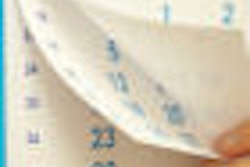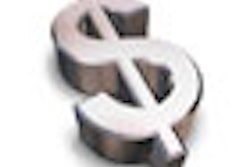
There is a quiet calm as each New Year begins, a sense of hope and optimism that what didn't work over the past 12 months can be left behind and replaced by something that (hopefully) does.
With 2009 now in the history books, it's time to look ahead to what the dental community can expect in 2010.
Foremost on everyone's minds, of course, is the economy. Is the worst really over? Are patients beginning to return? Will income levels once again reach the heights of just two years ago?
— Roger Levin, D.D.S., president,
Levin Group
In his January 4, 2010, Wall Street Journal blog, James Altucher -- managing partner of the asset management firm Formula Capital -- wrote, "In 1929, Americans spent $480 million on dental care. That number is now more than $50 billion a year. ... Americans now have three more teeth than they had 40 years ago. The number of children who don't have cavities has grown from 26% in 1971 to more than 70% now. So despite the value of the dollar going so drastically down (96%!), somehow we've been able to spend so much of it on a luxury service: dental care."
Thus, he concludes, "regardless of inflation, regardless of the ups and downs of the economy -- our teeth are getting better every year and we're spending more money on oral hygiene than ever before."
That sounds pretty optimistic, considering the year many of us just had.
Stocks performing well
But Altucher is not alone. In "Dental 2010 Outlook" (also released January 4), analyst Jeff Johnson of R.W. Baird finds many things for the dental community to be positive about.
"While headwinds caused by the lagging impact [that] job losses have on domestic dental demand could continue near-term, the potential resumption of job creation by early/mid-2010 could provide late-2010/early-2011 domestic dental market tailwinds," he wrote. In addition, "personal consumption expenditure (PCE) trends have recently improved off mid-2009 trough levels, and given a strong correlation between PCEs and dental spending over the past 50 years, we believe even this modest uptick could provide domestic dental market tailwinds over coming months."
These trends bode well for the 10 public dental companies Baird tracks: Align Technology, American Dental Partners, Biolase Technology, Birner Dental Management, Dentsply, Henry Schein, National Dentex, Patterson, Sirona, and Young Innovations. In fact, several have already seen an improvement in their stock performance, Johnson noted.
"Those stocks hit hardest in 2008 -- and especially those decimated near year-end 2008 -- bounced back nicely in 2009 to lead the group's performance," he wrote. "Specifically, Sirona more than tripled (+202%) in 2009 after falling 51% in Q4-08 and nearly 70% for all of 2008, while Young Innovations returned an impressive 65% in 2009 following a 25% decline in Q4-08 and a 37% decline for the full-year." In addition, American Dental Partners finished 2009 up 86%, following declines of 42% in Q4-08 and 26% during all of 2008.
"We believe that as consumer discretionary spending trends modestly improve over coming months and job trends potentially turn positive in early/mid-2010, industry-wide growth can turn positive," Johnson concluded.
Changing face of dentistry
What does all of this mean for the practice of dentistry?
"I am optimistic that practice production will go up in 2010, not necessarily because the economy is improving but because dentists are taking the necessary steps to improve productivity," said Roger Levin, D.D.S., president of the practice management consulting firm Levin Group. "I think we are also going to see an increase in investments by dentists in certain services, equipment, and technologies. Dentists are thinking more like business people, investing in things that will increase productivity and help their practices grow."
As a result, technologies and products that help to automate the practice of dentistry will gain popularity as well, Dr. Levin noted.
"When you can automate certain processes or have a device like the Biolase that is marketable, those are the things that are going to be purchased and used," he said. "It has to either increase production or increase the number of patients."
While pediatric dentistry and orthodontics have emerged as the fastest growing specialties, he added, "I think we are going to see a slight rebound in cosmetic dentistry. People are spending a bit more on themselves again."
And although healthcare reform and competition from midlevel providers are at the forefront of dentists' concerns about the future, Dr. Levin believes dentistry will remain independent and robust.
"This recession has hit dentistry fairly hard, but dentists are recognizing they need to run better businesses," he said. "The practices that take the time to design excellent business systems and customer service systems are the ones that will benefit."
Copyright © 2009 DrBicuspid.com



















